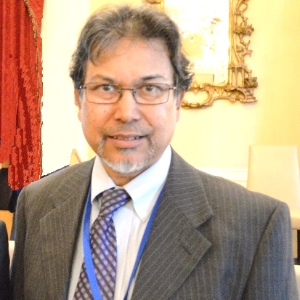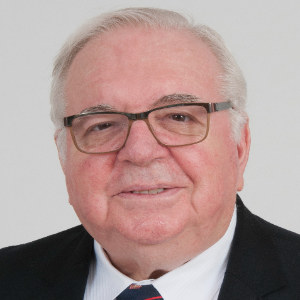A material might fail in a way called delamination in which it separates into layers. Concrete and laminate composites are two examples of materials that can fail by delamination. Layer separation can cause processing to fail in materials including steel created by rolling, polymers, and metals produced by 3D printing. Additionally, surface coatings like paints and films have the potential to separate from the coated substrate. In laminated composites, the layers frequently separate first due to a failure in interlayer adhesion. A considerably weaker polymer matrix holds sheets of high strength reinforcement, such as carbon fibre or fibreglass, together in fiber-reinforced plastics, for instance (e.g., epoxy). In particular, shear stresses and loads applied perpendicular to the high strength layers might result in fracture or the fiber reinforcement to debond from the polymer. In reinforced concrete, delamination can also happen when metal reinforcements close to the surface corrode. When the oxidised metal is constrained by the concrete, the higher volume it possesses results in tensions. When stresses are greater than the concrete's capacity to withstand them, cracks may emerge, propagate, and link with those of nearby concrete structures as a result of corroded rebar, forming a fracture plane parallel to the surface. Concrete at the surface may detach from the substrate after the fracture plane has developed. Material layers created during processing are susceptible to delamination failure.

Ephraim Suhir
Portland State University, United States
Thomas J Webster
Interstellar Therapeutics, United States
Robert Buenker
University of Wuppertal, Germany
Will Skene
Montreal University, Canada
Valeriy A Buryachenko
Micromechanics & Composites LLC, United States
Anis Rahman
Applied Research & Photonics, Inc, United States
Will Skene
Montreal University, Canada
Robert Guidoin
Laval University, Canada
Robert Buenker
University of Wuppertal, Germany


Title : Introducing picotechnology: An exciting extension of nanotechnology
Thomas J Webster, Interstellar Therapeutics, United States
Title : The failure of both einsteins space-time theory and his equivalence principle and their resolution by the uniform scaling method
Robert Buenker, University of Wuppertal, Germany
Title : Material challenges with proton conducting ceramics for intermediate temperature hydrogenation/dehydrogenation applications
Saheli Biswas, Commonwealth Scientific and Industrial Research Organisation, Australia
Title : Porphyrin layers at metal-electrolyte interfaces monitored by EC-STM and CV
Marek Nowicki, University of Wroclaw, Poland
Title : Color control of electrochromes by structural modification
Will Skene, Montreal University, Canada
Title : Make experiments more efficient: Two simple and powerful approaches. Mg2Si growth for photovoltaic and thermoelectric applications
Alexander S Gouralnik , Institute of Automation and Control Processes, Russian Federation
Title : Reconfigurable antenna structures using tunable materials
Nasimuddin, Institute for Infocomm Research, Singapore
Title : (0, 1 and 2) Dimensional hybrid architecture of the synthesized materials leads the smart sensing of the gaseous species at low/room temperature
D R Patil, North Maharashtra University, India
Title : Enhanced grain refinement, precipitates regulation, and improved mechanical properties of cast Al-Li alloy by Ti addition and heat treatment
Lixiong Shao, Shanghai Jiao Tong University, China
Title : Broadband sound attenuation of shape memory polymer with triangular-honeycomb unit cell metamaterial structural design
Musaab Ejaz, Universiti Teknologi PETRONAS (UTP), Malaysia